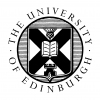© Pint of Science, 2025. All rights reserved.
Living right on the coast, here in Edinburgh we get to enjoy the sea breeze, fresh fish, and perhaps a cold dip. But have you thought more about the birds and fish that call this place home? Or what happens where air meets water? Or did you know about the metals at the bottom of the sea floor? Join us for this panel discussion to find out!
*This event starts an hour earlier than other Pint of Science events*
*This event starts an hour earlier than other Pint of Science events*
Has Fish Had Its Chips?
Professor Michel Kaiser
(Professor of Fisheries Conservation and Co-Academic Lead of the Lyell Centre, Heriot Watt University)
Pressure on global fisheries is increasing with population growth and increasing wealth. The world’s poorest people are most dependent on fish as their main dietary source of protein and micronutrients. Overfishing has led to depletion of fish stocks around the globe. Climate change is now causing fish to change distribution patterns with bluefin tuna caught legally for the first time since the 1960s in the UK this year. Despite the problems, there are many successes which show that where we have good science and management, fish thrive and are fished sustainably. Technology has an important role to play in everything from reducing bycatch to reducing human slavery issues at sea associated with illegal fishing.
Deep-Sea Mining: Solution or Problem?
Dr Marta Maria Cecchetto
(Postdoctoral Researcher at the Lyell Centre, Heriot-Watt University)
As the worldwide shortages of metals and the increasing demand for battery dependant technologies to help reduce the effects of climate change, the bottom of the sea presents a new viable solution. Deep-sea mining targets minerals important to manufacture new batteries (i.e., copper, cobalt, manganese, nickel) below 200 m depth. However, the process of extraction is extremely destructive with irreversible consequences for our oceans. While the need for greener technologies is evident, the need of a regulatory framework for deep-sea mining is fundamental for the health of our oceans.
Where the Air Meets the Sea: Exploring a Whole World in One Millimetre
Dr Philippa Rickard
(Senior Postdoctoral Research Associate at the Lyell Centre, Heriot-Watt University)
In the top 1 millimetre of water lives an ecosystem that is biologically, chemically, and physically distinct to the underlying water column. This 1mm (also known as the surface microlayer) is the gatekeeper to the movement of gases and particles between the atmosphere and ocean; its composition, which varies regionally and seasonally, significantly influences how quickly climate-active gases (i.e. carbon dioxide) move between the air and the water. As the ocean is a global reservoir of an estimated 20-40% of post-industrial carbon dioxide emissions, understanding ecosystem variability within the surface microlayer is fundamental to accurately predicting regional and global carbon fluxes into the future.
Under (and Over!) The Sea: Conservation Efforts for Sustainable Marine Life
Charlotte Foster
(Marine Engagement Officer, Scottish Seabird Centre)
For over 20 years now, the Scottish Seabird Centre has been helping people to learn about Scotland’s marine wildlife, habitats, ecosystems, and iconic seabirds while simultaneously working to protect Scotland’s marine environment against threats such as climate change, pollution, invasive species, unsustainable fishing and more. The Scottish Seabird Center has organised initiatives such as The SOS Puffin Project to help restore Scotland's declining puffin numbers and partnered with other non-profit organisations to restore seagrass meadows, organise beach cleans, and monitor marine wildlife.
Map data © OpenStreetMap contributors.
